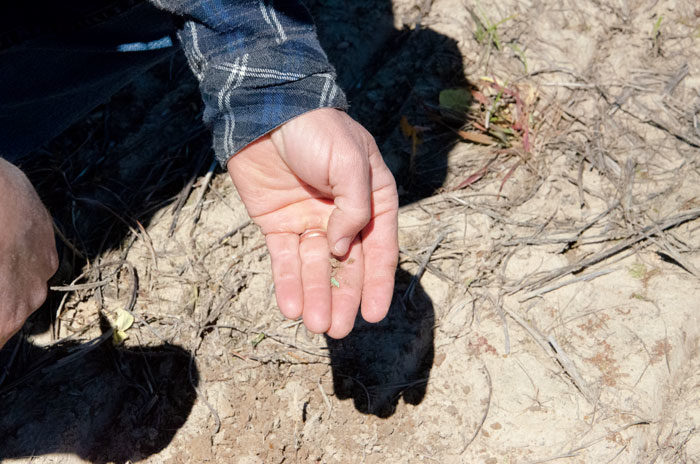No-Till Farmer
Get full access NOW to the most comprehensive, powerful and easy-to-use online resource for no-tillage practices. Just one good idea will pay for your subscription hundreds of times over.

NO-TILL RICE. Fuselier is experimenting with no-tilling rice in the fall instead of spring.
Driving around south-central Louisiana in March could probably make an ardent no-tiller break out in hives
Tillage is everywhere. Many rice growers use a process called “laser leveling,” in which producers use lasers to guide soil shaping to flatten out the basins that will hold water during growing season.
A rotation of rice and crawfish is common on the Cajun Prairie, a triangle-shaped prairie region of southwest Louisiana.
Crawfish trap anchors offer a window onto how tillage has compacted the soil, says Justin Fuselier, who farms and ranches outside of Eunice, La.
“They have a little 3/16-inch metal rod that sticks out about 7 or 8 inches and runs all the way up to the handle,” he says. “You stick the rod in the ground, and it anchors it. Sometimes you can’t even stab that rod in a flooded field. How’s that for compaction?”
Amid widespread conventional tillage practices of the Prairie, Fuselier and his neighbor, Jody Sittig, stand out.
In wetland rice cultivation, fields are typically tilled, then planted in spring, then flooded once the rice has reached a certain development, then drained and harvested. To keep the water around the rice plants, fields are surrounded by berms, which require periodic refreshing. Once the rice has been harvested, the remainder is used for foraging crawfish typically in the fall, which are collected by traps the following spring.

FIELD STUDY. Justin Fuselier examines fields sporting the remnants of sprayed-down covers in Jodi Sittig’s rice field near Eunice, La.,…